The Colorado Avalanche have an embarrassment of riches heading into the playoffs. The internal competition should be fierce as they prove to be the deepest club in the postseason. If everyone plays to their full potential, the Avs will have four legitimate scoring lines with quality two-way players.
Related: Two of the Cheapest NHL Trades Ever
On March 11, the final day of the regular season, the Avalanche had 7 of their top 12 forwards sidelined with injury. Table 1 shows who was still out of the lineup at the end of the season, which precipitated the re-arrangement of all scoring lines and the call-up of several AHL players to fill in. Now that the roster is fully healthy and will expand from 23 to 28 players for the playoffs, only a few of those fill-ins will be needed.
Table 1. Injured Avalanche players at end of 2019-20 regular season
| Name | Status | Injury Date | Injury | Status |
| Andre Burakovsky | Sidelined | 2/29/2020 | Lower body | Day-to-Day |
| Matt Calvert | I.L. | 3/2/2020 | Lower body | Week-to-Week |
| Joonas Donskoi | Sidelined | 3/12/2020 | Concussion | Day-to-Day |
| Nazem Kadri | I.L. | 2/9/2020 | Lower body | Week-to-Week |
| Nathan MacKinnon | Sidelined | 3/9/2020 | Lower body | Day-to-Day |
| Mikko Rantanen | Sidelined | 2/17/2020 | Upper body | Day-to-Day |
| Colin Wilson | I.L. | 10/30/2019 | Lower body | Indefinitely |
| Philipp Grubauer | Sidelined | 2/15/2020 | Lower body | Indefinitely |
I expect the extra five players to be Shane Bowers, Conor Timmins, Martin Kaut, Matt Nieto, and Michael Hutchinson. Avalanche insider Adrian Dater does not expect the club to call up uber-prospect Bowen Byram:
Byram could join the Avs as a Black Ace, but I’m told by an Avalanche source that Byram will not play, no matter what. Why not, you ask? Because, the Avs want to keep his entry-level contract still fully intact.
A ‘Black Ace’ is a player eligible for a call-up during the playoffs, provided he’s under contract and his minor league season is finished. Last season, the club called up prospect Cale Makar, but the team’s defense was not as deep as it is now. I’ll trust Adrian’s report and won’t include him on the expanded roster below.
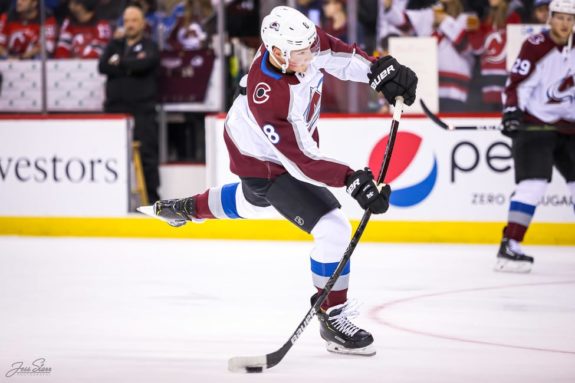
Table 2. Projected Expanded Playoff Roster
| Forwards (17) | Forwards (cont.) | Defensemen (8) | Goalies (3) |
| Andre Burakovsky | Nathan MacKinnon | Cale Makar | Michael Hutchinson |
| Colin Wilson | Nazem Kadri | Connor Timmins | Pavel Francouz |
| Gabriel Landeskog | Pierre-Eduoard Bellemare | Erik Johnson | Philipp Grubauer |
| Joonas Donskoi | Shane Bowers | Ian Cole | |
| JT Compher | Tyson Jost | Mark Barberio | |
| Martin Kaut | Valeri Nichushkin | Nikita Zadorov | |
| Matt Calvert | Vlad Namestnikov | Ryan Graves | |
| Matthew Nieto | Vladislav Kamenev | Samuel Girard | |
| Mikko Rantanen |
Many players earned major minutes this season who I don’t expect to play in the playoffs. The top two scoring lines should be constant but the bottom six forwards will be more fluid. Here’s how I think it will all shake out.
1st Scoring Line
F: Landeskog (shoots: L), MacKinnon (R), Rantanen (R)
D: Graves (L), Makar (R)
No surprises here. With Landeskog and Rantanen returning from injury, they’ll re-join MacKinnon at the top of the Avalanche offense. Burakovsky had a slightly better season than Landeskog by some metrics (4.1 offensive point shares versus 3.6, a measure of points in the standings contributed by offensive play), but Landeskog’s possession metrics were better. Landeskog’s Fenwick For % (FF%) was 53.6 versus 51.6 for Burakovsky, with values over 50%. Also, the Avs’ captain slightly outscored Burakovsky per game (0.81 versus 0.78).
There’s also no reason to break up the top defense pairing. Makar returned to Graves’ right-side when he came back from injury in March.
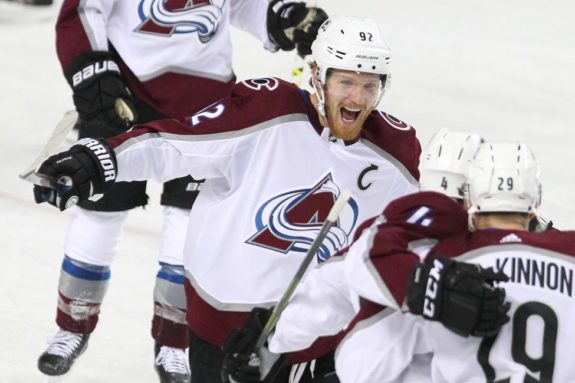
Graves has been outstanding this season, leading the NHL in plus-minus and succeeding with whomever he plays. From NBC Sports on March 30:
While it is easy to conclude that a lot of that is due to Makar carrying the duo, Graves has also excelled when playing next to Ian Cole. Basically, no matter who he plays next to, it works. For the season, Graves has nine goals and 26 total points and is a league-leading plus-40 while playing close to 19 minutes per game. He may not be the impact player or star that Makar is, but his play has been an outstanding development this season.
2nd Scoring Line
F: Burakovsky (L), Kadri (L), Nichushkin (L)
D: Girard (L), Johnson (R)
Of the 22 even-strength goals scored while Kadri was on the ice this season, 11 were scored when Burakovsky and Nichushkin were his linemates. Another reason I combined these players is that Nichushkin was the team’s best defensive forward in even-strength expected goals from unblocked shots (xG: 1.96). This balances out Burakovsky’s liability in that respect (xG: 2.74).
Related: NHL Hat Tricks History & Fun Facts
Nichushkin and Kadri provide a lot of sandpaper too, an important boost when the team needs to increase the intensity. An all-lefty line isn’t ideal, but it’s far better than inserting under-performing right-handed shooters Compher or Donskoi into it.
3rd Scoring Line
F: Calvert (L), Jost (L), Namestnikov (L)
D: Cole (L), Zadorov (L)
With how good Jost played defensively this season (xG: 2.20), I expect him to center this line which will feature another strong two-way forward in Calvert (xG: 2.37). They’ll balance out the replacement-level defense of Namestnikov, who’s more of a speedy offensive winger. During the regular season, Calvert was on a career-high scoring pace (0.50 points per game), and Namestnikov had scored six points in his nine games with the Avalanche.
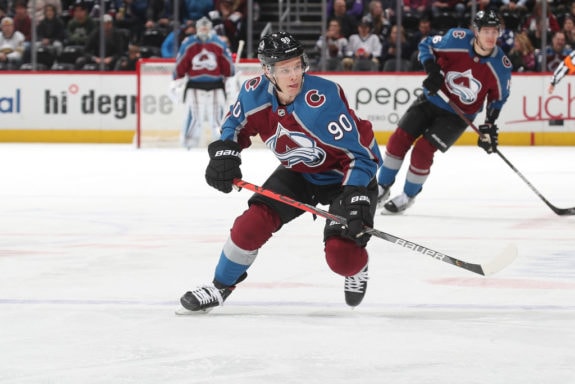
If both recapture this magic upon return, then they’ll turn this trio into a true scoring line. That could be daggers for Avalanche opponents to figure out defensively. Plus, it’ll pressure the Avs’ skilled but under-performing 4th line to step up its production.
4th Scoring Line
F: Compher (R), Donskoi (R), Wilson (L)
Advanced statistics tell a different story from the standard stats on Compher and Donskoi’s 2019-20 season. Both were on pace to score the most regular-season points of their careers: 37 for Compher and 39 for Donskoi. These numbers would have placed them in the Avs’ top-six scoring forwards. However, they had a team-worst Fenwick For % relative to the team average (FF-rel), blueliners included.
Since the Avalanche are stocked with quality puck-handlers, the team’s FF% is approximately 51%. Compher’s FF-rel was minus-5.6 and Donskoi’s was minus-4.7. What makes Donskoi’s number even worse, of the 29 goals scored while he was on the ice, he was playing with a member of the Avs’ 1st line for 10 of them. Hopefully, he can rediscover the skills for which he was acquired last summer.
Wilson played nine games this season, so his demotion is a result of the 3rd liners’ solid play, but Donskoi and Compher were disappointing. All three players are quality veterans who have shown strong bottom-six play in recent seasons. At their best, each player is a strong checking line forward who can score and play quality defense.
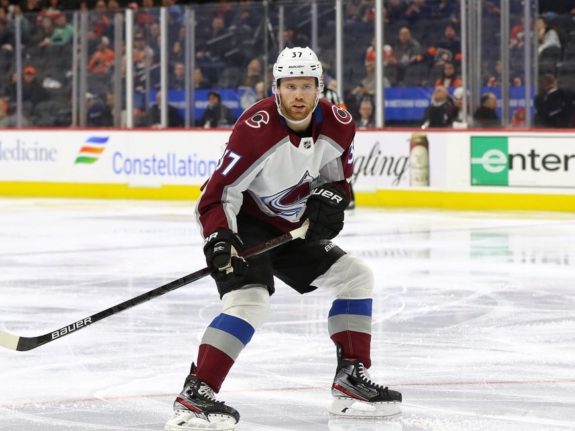
I relegated Bellemare to penalty-killing duties, and I don’t expect Nieto or Kamenev to have playoff roles at all. Barberio will probably serve as the seventh defenseman as he did in the regular season. The club is too deep at full strength for these players to justify much playing time, except in special circumstances.
Special Teams
Power Play
1st unit (PP 1): Kadri, Landeskog, MacKinnon, Makar, Rantanen
2nd unit (PP 2): Burakovsky, Girard, Jost, Namestnikov, Wilson
Penalty Kill (PK)
Bellemare, Calvert, Cole, TBD
The Avs have similar roles for each position on the two power-play units. Mobile defensemen (Makar on PP1, Girard PP2) pair on the blue line with creative, two-way centers with heavy shots (MacKinnon PP1, Jost PP2). The wings are populated by a sniper with a plus snapshot (Rantanen PP1, Burakovsky PP2) and a mobile two-way stick-handler (Landeskog PP1, Namestnikov PP2). The primary play-driver behind the net is a tough center who’s good along the boards (Kadri PP1, Wilson PP2).
Related: 2013 NHL Entry Draft – Where Are They Now?
All four centers appear on the power play, and each line is represented, supporting the fact that the Avs have four scoring lines. The key to power-play success will be MacKinnon. He needs to shoot the puck often to create quality chances for his teammates. Despite having a heavy slapshot from the point, he’s creative in how he varies his positioning, often cycling to the wings and engaging a give-and-go. He’s a very difficult defensive assignment for opposing penalty killers and therefore opens passing lanes to the wings.
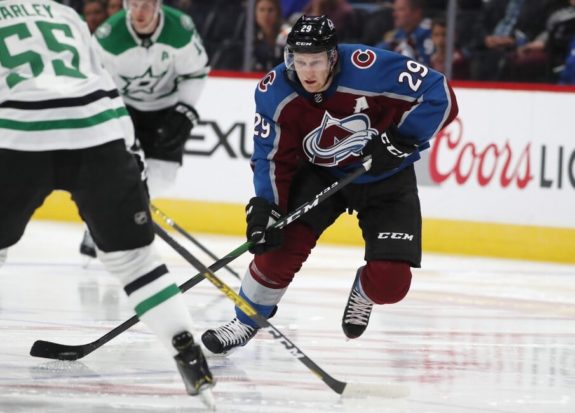
Two notable exclusions here are Compher and Donskoi. The team performed better without them on the ice for either the power play or penalty kill, despite that Compher scored 5 power-play points this season and played on the penalty kill in seasons past. Donskoi was a major liability on the power play this season, as the club was 1.51 xG better without him on the ice. Also, Namestnikov scored four power-play points in nine games which is another reason why I placed him on the 2nd unit over Compher.
The best Avalanche penalty killers this season were Bellemare, Calvert, and Cole. Of any trio who played at least 35 minutes together, they allowed the least number of power-play goals (4) and had the lowest xG (3.37). Zadorov was also very good in place of Cole on the penalty kill, playing nearly 21 minutes over 46 games with Bellemare and Calvert.
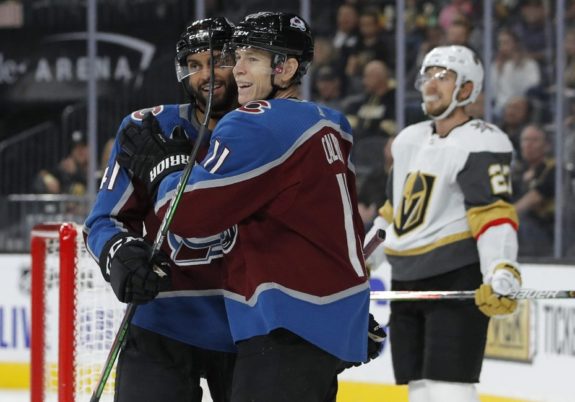
They allowed only two power-play goals and had an expected goal differential of just 1.30. Additionally, Graves, Jost, and Nichushkin spent at least 10 minutes individually on the penalty kill and played very well. I think the 4th penalty kill player is situation-specific and so I left that slot blank.
Goaltending
I expect the Avs to start Pavel Francouz in the playoffs. It’s a luxury for the club to have two starting-caliber goalies on the roster in case one falters, but it’s also excellent motivation for each if head coach Jared Bednar chooses to go with the “hot hand” approach.
Francouz gets the nod because of his superior play this season, and not only because Grubauer hasn’t played since the frustrating loss in the NHL Stadium Series matchup with Los Angeles Kings on Feb. 15. Table 2 shows how much better Francouz was than Grubauer in 2019-20.
Table 2. Avalanche Goalie Stats for 2019-20
| GP | W-L-T | Save % | GAA | Adj. GAA | GSAA | GPS | |
| Pavel Francouz | 34 | 21-7-4 | 0.923 | 2.41 | 2.57 | 13.06 | 7.0 |
| Philipp Grubauer | 36 | 18-12-4 | 0.916 | 2.63 | 2.80 | 6.48 | 6.7 |
Adjusted goals-against average (Adj. GAA) considers the era in which the goalie plays and compares their goals-against average (GAA) to the league average. Francouz’s and Grubauer’s adjusted is higher than the unadjusted GAA because goalies are allowing fewer goals in this era than the league average. In other words, it’s harder to score nowadays, so it’s expected that all goalies’ GAAs are depressed. Therefore, in 2019-20, we’d expect an increased adjusted value to capture the true performance of a goalie.
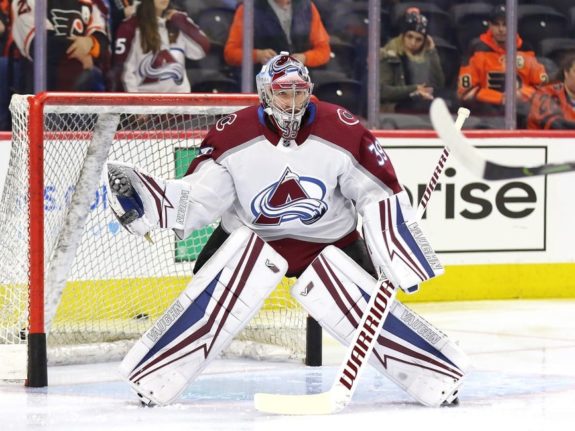
We use save percentage and unadjusted GAA compared to the league average to determine the number of goals saved above average, or GSAA. From Blueshirt Breakaway in 2017:
This is a cumulative stat that represents the number of goals allowed by a goaltender compared to the number of goals that would have been allowed by a league average goalie. It is similar in nature to WAR in baseball that way, except it is specific to goals allowed by goaltenders.
Finally, goalie point shares (GPS) is how many team standings points are contributed by each netminder.
Francouz’s numbers are better across the board. Of all NHL goalies with at least 20 games played, he ranks 6th in the NHL in GSAA, Grubauer 19th. The 13.06 more goals than an average goalie would have allowed versus Francouz equals a little more than two wins. This fits with his GPS of 7.0 since two wins equal six points in the standings. The metrics aren’t an exact science but they contribute to a goalie’s overall analysis.
Francouz is also 5th in save percentage, Grubauer 19th. In the first eight games after Grubauer was lost for the remainder of the regular season, Francouz went 6-0-0 with a .941 save percentage, winning two pairs of away games. His performance started to revert back to the mean in the final four games, culminating in a save percentage of .884.
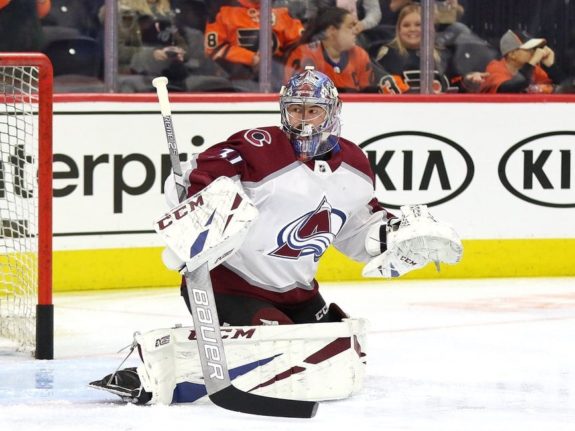
At some point, he was going to falter since keeping that Herculean pace was unreasonable for the 29-year-old rookie, but the glimpse into his potential was incredibly exciting and should earn him the nod over Grubauer to start in the playoffs.
Stronger Through Adversity
The Avalanche went through several hardships this season, and, miraculously, they persevered through it all. They lost a historical number of stars to injury, yet finished just two points out of first place in the Western Conference. The club scored 237 goals this season, the most since their inaugural season in Denver in 1995-96. That’s a testament to the coaching staff who keep the players motivated and united in their quest for the Cup, but it’s also due to the depth created by general manager Joe Sakic. There’s not a deeper or more resilient team in the NHL, and I expect the club to make the Final, if not win the Stanley Cup this postseason.